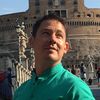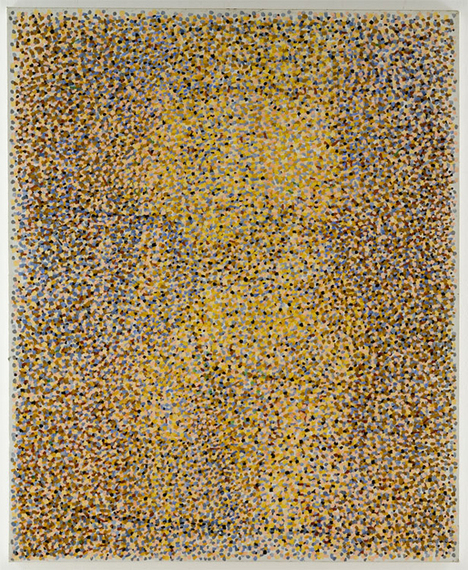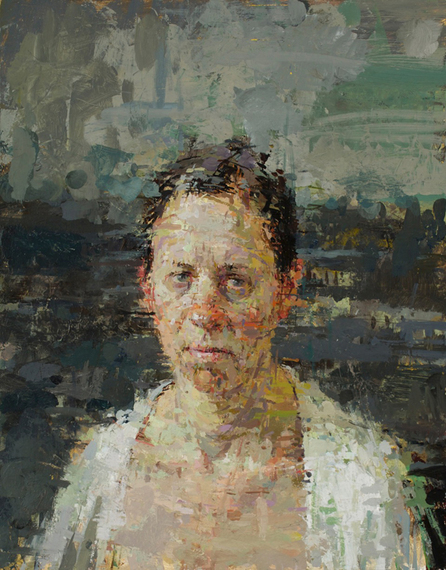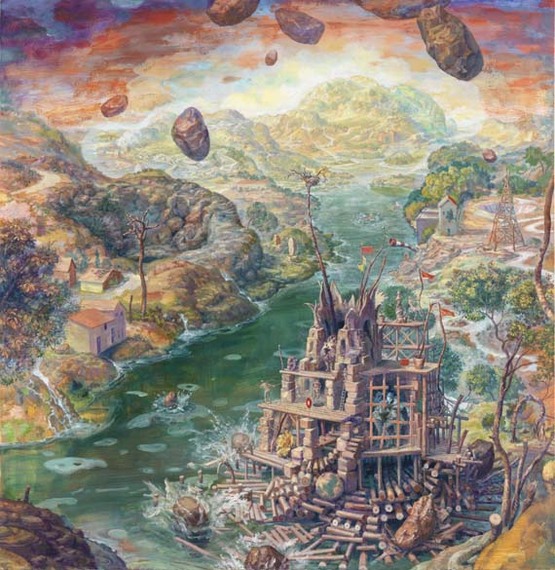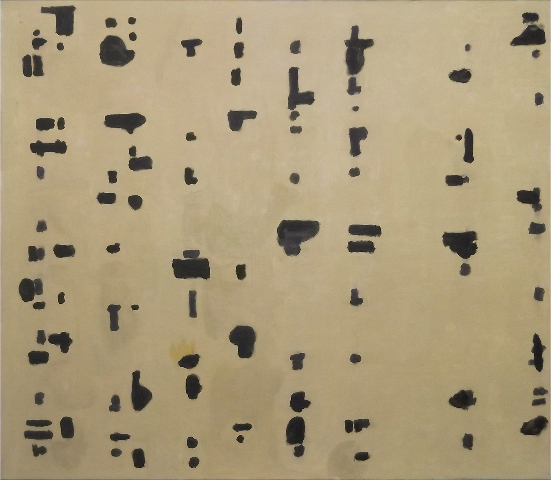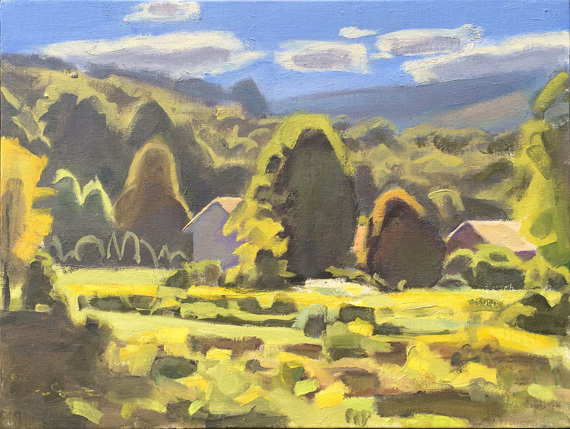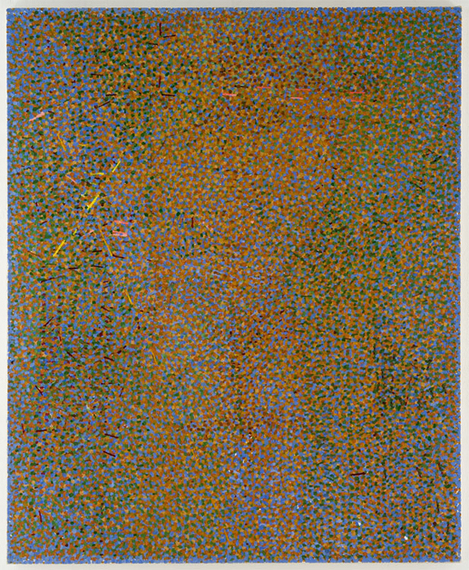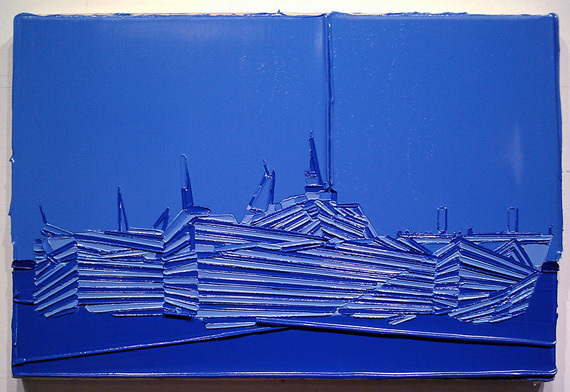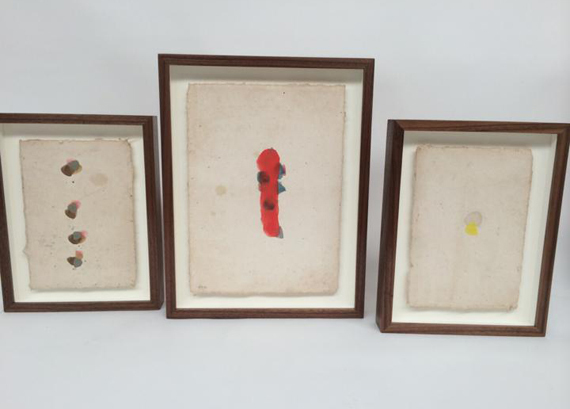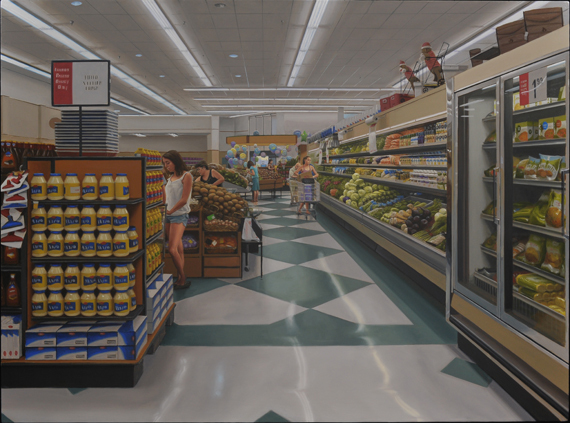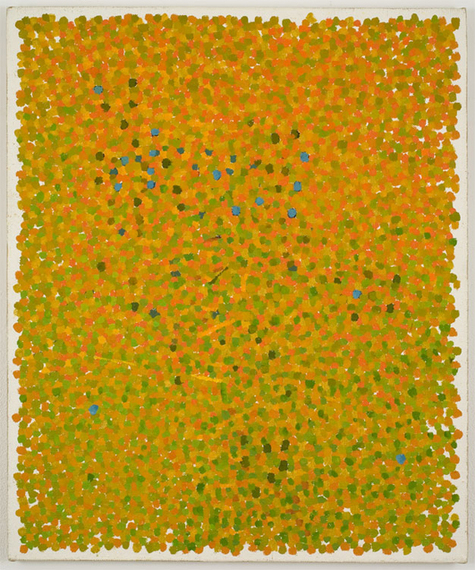Andrew Forge was an influential painter and teacher for years at Yale among other places. His influence was formative for me and I know for many others as well. An ideal tribute to his memory would be a sprawling museum show of his work and the work of artists he influenced, since that's not in my power; I reached out to artists who have generously shared their memories and work below. If you're in New York this December, you can see a couple of Andrew's paintings as they demand to be seen, in the flesh, at The Betty Cuningham Gallery The show is called, "It's Magic!" a group exhibition of works by Andrew Forge, William Bailey, Rackstraw Downes, Jake Berthot, Forrest Bess, Alfonso Fratteggiani Bianchi, John Elderfield, Alison Wilding, and Christopher Wilmarth, December 10 - January 10, 2015 with an opening reception on Saturday, December 13th from 4 -7 pm.
Ann Gale had Andrew Forge as a teacher and I was happy to get the chance to talk about him with her. She remembered in particular a short two-part question he asked her: 'What are your intentions, and what are your assumptions?' a short question which fosters a self-critical reframing.
Andrew Forge by Julie Heffernan
My first semester at Yale was a disaster. I came into the MFA Program as a painter but not really understanding what painting is (this was the time of BFAs in self-exploration) and found myself in a space of magical thinking where I assumed, now that I was in the same program that graduated the likes of Chuck Close and Brice Marden, I would suddenly be able to paint anything I wanted. I went at it, stretching huge canvases and smearing on colors, hoping the instincts that had gotten me into the program would now work to keep me there.My first critique was with Andrew Forge. I can still see his tall lanky frame in the doorway of my studio, how he paused and looked around before actually entering; how he paced around with his head down and brow furrowed, trying to give respect to the presence of another human being in the room but not knowing how on earth he might give intellectual cred to the awful messes in front of him, or what to say in general to give this poor clueless student the beginning of an idea of what a painting might be.
That's how it went the entire first semester. I would paint one sorry painting after another, and call Andrew in to look, who would patiently scrutinize the calamity and search his capacious intellect for something to say about it. With his infinite kindness and great mind he always would, in the end, find something wonderful to say to legitimize the poor thing he was conscripted to care about, and then break into a big grin as though he had discovered some marvelous treat in the bottom of a box of stale cheerios. Slowly, slowly, with that kind of intelligence guiding me I did get a clue, and I made some paintings worth discussing, was awarded the famous Cup and, best of all, Andrew Forge telling a friend that he would like to know me after graduation. I never took him up on it. A huge regret.
More Dots to Be Connected by Denzil Hurley
Andrew always seemed to see more, and ask more of a given work, a situation and himself. His presence, his questioning, and keen perception located a listener or viewer to the inside of things, and away from a periphery to acknowledge an expanding and a pulsating core. He would often say, "press on!" and that would indicate that there is something there and more to be realized. Andrew's passion and thoughtfulness embraced knowledge with an openness that pointed to complexities and affirmations of beauty that his own work carried and holds.
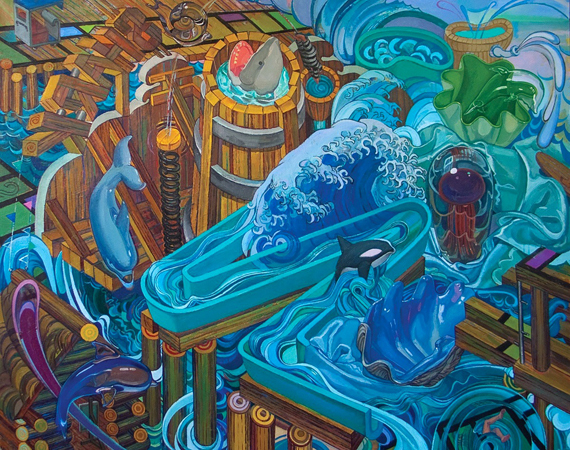
Margaret McCann Sideshow 48 x 60 inches 2012
Margaret McCann
I studied at the New York Studio School in the 1980s with Andrew Forge's wife, Ruth Miller, and with Gretna Campbell, who also taught at Yale and suggested I schedule my grad school interview the day Forge and Jake Berthot were conducting them. They responded positively, so at Yale I took a seminar with Forge, which involved reading Gombrich, analyzing Turners at the British Art Center, and following assignments like 'do a painting involving an oval'. I made one of my best within those curious perimeters, "Self-Portrait as a Lady" (I'd just read the Henry James novel), which the director of the Yale Art Gallery purchased. I wrote an ambitious paper comparing the genres of portraiture, still life, and landscape, and Forge urged me to try to publish it, and to keep writing. He brought in a book on Dada and Surrealism for me to peruse, and suggested I take visiting professor Umberto Eco's class, advice I sadly didn't follow. I see now that like any perceptive teacher he was showing me how to take myself more seriously. Although his recognition of my artistic voice - something beyond technical ability, which back then was suspected of suppressing authenticity - initially bewildered me, over time it became an encouraging voice in the studio.
Forge's judicious remarks at critiques were short on the kind of flashy drama that shocks and captivates, but fades beyond the memory of injury. While painting and teaching in Italy for eight years after Yale, I read a lot of art history, including Forge's excellent book on Monet. Auden's observation in "Secondary Worlds," that it takes experiencing two other cultures to understand your own deeply, made me wonder if being a foreigner had shaped Forge's more expansive viewpoint, in comparison to other teachers' focus on the fickle politics of the art world. Eventually I got a couple poems published, and after returning to the states wrote art reviews for "Art New England," and a humor column for a local New Hampshire paper. When David Kratz of the New York Academy of Art recently asked me to edit "The Figure," a Skira/Rizzoli book, the confidence I felt pursuing my vision for it - evolving approaches from antiquity to cyberspace - owed much to Andrew Forge.
Paula Heisen
As a Teaching Assistant for Andrew Forge at Yale in 1981-82, I was often as enthralled with his teaching methods as the beginning drawing students in the class. The subtle philosophical method with which he emphasized both the realities and mysteries of perceptual experience, and his vivid presentations of the tradition of art, were so seductive that even at this point in my life I often cannot disentangle his ideas from my own.
In a typical demonstration, he asked me to stand in front of the class in a Kouros pose, legs straight, one in front of the other, while he gave a lecture on the history of the representation of the human figure in art. When he got to ancient Greece, he asked me to pull the front leg back, shift my hips, slightly bend one leg and twist my torso. Voilà! Thousands of years of imagery upended by a minor shift in stance, Kouros to contrapposto. In another class, he placed a student in front of an easel, next to a still life setup. He talked about the "triangle" formed by the artist, the thing observed and the painting itself, explaining how during the process of painting or drawing what one sees, the artwork itself takes on a power as important as the thing observed, and that part of an artist's job is to recognize that particular power. I think of that triangle all the time. I watch as a painting slowly takes on a reality beyond perceptual observation, eventually replacing it in importance. It is this psychic unity that Andrew was illustrating, something I look for in my own work and in the work of others.
Once, while talking to him at an opening in New York City, I had the sensation of his presence blinking in and out of existence, something like a quantum particle. It seemed to me an essential part of his intelligence, his feeling at home in flickering ambiguity. At that instant, I understood an aspect of his painting that I had never before grasped. That there, not-thereness in his work: the elusive presence of things, sensed more than seen; the need for openness and exploration. I saw his paintings as a complete manifestation of the complexity of his brilliant mind.
Tommy Fitzpatrick
Once I remember a studio visit at the Art and Architecture Building where Andrew Forge discussed how painting is a non verbal art that transcends words. He then proceeded to discuss the importance of Broadway Boogie Woogie for at least an hour. His generosity and patience for young people helped me find myself as an artist. As a professor, he was full of life. When I meet Andrew he was working on his dot paintings.
You could tell how passionate he was for his work. Andrew would glow when he discussed his latest discovery. Andrew Forge made me and others aspire to do more.
Mark Brosseau
One of the first things that Andrew said to me in my studio at Penn was "Do you want your paintings to be better because they're painted better, or because they're more what you want them to be." It seemed like a simple but important distinction that I had never made before, and it's stuck with me since then.
Steve Hicks
I've always considered Lennart Anderson my mechanic (so willing to muck around with my palate and painting) - and Andrew my analyst. What is so obvious to all that knew him is how he was able to put his finger on at once both the most simple and elusive ideas (typically after a St School lecture). Most importantly he didn't say anything when he didn't have anything to say. Once at my studio at Yale we had some initial small talk as we might had if we met by chance in a coffee shop - then after a pause he'd say "so great to see you" and leave! But more often there would be just one "simple" (Columbo-like) last question that would leave me thinking for weeks if not years.
Stuart Elster
I remember one specific time Andrew saying, "that meaning in a work of art is the sum total of the artists choices." I know he was talking about painting, and that every decision the painter makes is present for the viewer in the fabric of the painting. What I took from this was that painting is a form time machine; the artist's choices are present to the viewer when looking, and that we (the viewer) are transported back the moment of the paintings making. There is no past in painting!
Denis Farrell
Battered and bruised, in June 1993, having just graduated from Yale University MFA in Painting I had the privilege of spending the next three months living at the home of Andrew and Ruth deep in West Connecticut. I was helping to restore their magical colonial house, with the building contractor and also Yale grad, Dawn McDaniel. There in that hidden place, they had themselves, their gardening, evening swims in their small outdoor pool (Andrew nude) trees, night, light and painting. Andrew painted in the evening into night. When I glanced him through the studio window smoking his pipe in his chair, he was in the act of looking. He never separated painting from looking. The extent to which he could look and discern was remarkable. He could also communicate-articulate his analysis of artworks with a spirit of generosity, and at the same time could leave you with something to think about. The paintings included here; I found in a book this past summer that I had brought for students at Lodestar School of Art painting intensive at Kylemore Abbey, Connemara, Ireland, and had framed for a recent exhibition. I made these paintings at Andrew's house in that summer of 1993. He was a wise and beautiful soul.
I consider myself very fortunate to have had Andrew Forge as a teacher. He had a palatable way that he would couch something substantial, so that you took the hint as a nudge rather than a jolt; and his words had a gentle, luminous precision. I tried to compliment him on this once by telling him that I had been in interviews where the first thing that came to mind as an answer to a question I was being asked was something that he had said, and I tried to recast the idea into my own words so that I wouldn't just be quoting him as a response, but I couldn't do it, to which his response was "Rubbish!" and he changed the subject. Refusing the compliment was a part of his gracious style of interacting; he once said "It's better to be wrong about something, because that's when you're learning something."
In the final critiques at Yale, someone had a painting of themselves nude with butterfly wings and talked about 'making a personal statement'. Forge said 'I think you're confusing a personal statement, which is rhetorical, with being as involved as you can be, which is the most personal thing that you can do."
Another time Forge defined 'Arty' as 'when the aesthetic effect is a consequence of things known beforehand.'
I signed up for as many crits as I could get with him, took figure painting and the 'Pictures and Writing' class he co-taught with John Hollander. I remember Forge quoting Auden 'Poetry is the precise expression of mixed feelings.'
He was also a great practical help and got me to organize my palette in the studio, I had been mixing color on the paintings and it was a cumbersome, inefficient way to work. He showed me different ways of organizing the palette and gave me some limited palettes, having me make a painting only from the primaries, which he was sure was what Pissarro was doing; or telling me how Whistler would have his students mix a large pile of neutral color from more saturated colors and have this pile in the center of the palette to use to desaturate the other colors they were using. Both have remained a part of the way I teach painting to my own students. Another thing I tell my student is that since I had Forge as a teacher, their lineage goes directly back to Jaques-Louis David. Forge gave a toast once 'To my teacher William Coldstream, whose teacher was William Tonks, whose teacher was Ingres!' which leads to David. Cheers to you, Andrew Forge!
